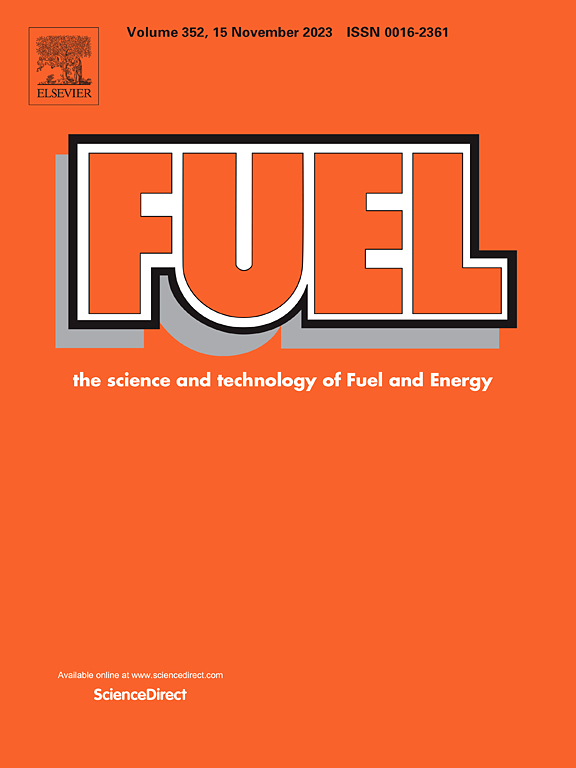湖相干酪根热演化过程中不同烃分子的保留能力:分子模拟与对接的启示
IF 7.5
1区 工程技术
Q2 ENERGY & FUELS
引用次数: 0
摘要
岩浆选择性地与碳氢化合物分子结合,从而影响页岩油的特性。对其保留能力的分子模拟有助于解释排出和保留碳氢化合物之间的成分差异。人工热模拟实验选择了渤海湾盆地沙河街地层的湖相岩浆岩进行。利用 13C NMR 获得了不同成熟度的岩浆的结构信息,并在此基础上进行了二维和三维建模。通过分子对接计算了正构烷烃、环烷烃和芳烃与各种角质的结合能。结果表明,在热演化过程中,角质原会失去长脂肪链,从而降低油势。在晚期石油窗口,角质快速演化并强烈保留碳氢化合物,尤其是碳原子数较高的芳烃。芳烃的结合稳定性超过正构烷烃和环构烷烃,在碳数较高的情况下,芳烃的吉布斯自由能比正构烷烃低 300 % 以上。对于饱和碳氢化合物,角质层更有可能保留较大的液态烷烃分子。小分子的甲基化可能是影响其与角质结合能力的一个重要因素。分子对接在石油地球化学中的应用取得了初步成功,为了解角质层内碳氢化合物的排出过程提供了新的视角。分子对接结果与现有研究结果一致,为模拟和验证石油滞留机制提供了一种快速、有效的方法。本文章由计算机程序翻译,如有差异,请以英文原文为准。
Retention ability of different hydrocarbon molecules during the thermal evolution of lacustrine kerogen: Insights from molecular simulation and docking
Kerogen selectively binds to hydrocarbon molecules, influencing shale oil properties. Molecular simulations of its retention capacity help explain compositional differences between expelled and retained hydrocarbons. Lacustrine Kerogen from the Shahejie Formation in the Bohai Bay Basin was selected for artificial thermal simulation experiments. Structural information of kerogen at various maturity levels was obtained using 13C NMR, based on which 2D and 3D modeling was performed. The binding energies of n-alkanes, cycloalkanes, and aromatics with various kerogens were calculated by molecular docking. Results show that kerogen loses long aliphatic chains, reducing oil potential in the thermal evolution. In the late oil window, kerogen rapidly evolves and strongly retains hydrocarbons, especially aromatics with higher carbon numbers. The binding stability of aromatics exceeds that of n-alkanes and cycloalkanes, with Gibbs free energy for aromatics being over 300 % lower than for n-alkanes at higher carbon numbers. For saturated hydrocarbons, kerogen is more likely to retain larger liquid alkane molecules. Methylation of small molecules may be an important factor affecting their ability to bind to the kerogen. The application of molecular docking into petroleum geochemistry has achieved initial success, offering novel insights into hydrocarbon expulsion processes within kerogen. The molecular docking results are consistent with existing findings and provide a rapid, effective approach for simulating and validating oil retention mechanisms.
求助全文
通过发布文献求助,成功后即可免费获取论文全文。
去求助
来源期刊

Fuel
工程技术-工程:化工
CiteScore
12.80
自引率
20.30%
发文量
3506
审稿时长
64 days
期刊介绍:
The exploration of energy sources remains a critical matter of study. For the past nine decades, fuel has consistently held the forefront in primary research efforts within the field of energy science. This area of investigation encompasses a wide range of subjects, with a particular emphasis on emerging concerns like environmental factors and pollution.
 求助内容:
求助内容: 应助结果提醒方式:
应助结果提醒方式:


